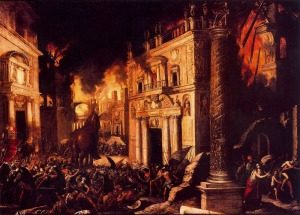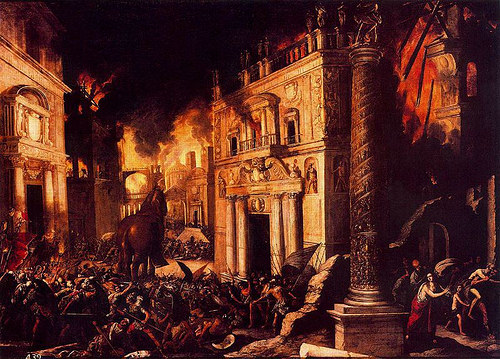
Zurich, Switzerland, 12 May 2016 – A scientific publication, book and comprehensive website (www.luwianstudies.org) made public today by scientists at the Luwian Studies foundation in Zurich, Switzerland, advance and add weight to the view that Aegean prehistory (3000–1200 BCE) suffers from a pro-European bias.
The civilizations of the Bronze Age Aegean recognized until now – the Mycenaean, Minoan and Cycladic – together cover only about one third of the Aegean coasts. The definition of these cultures goes back to Knossos excavator Arthur Evans, who with his publications in the 1920s laid the foundation for the research discipline of Aegean prehistory. At that time, Greece and Turkey were at war. Since the philhellene Evans aimed to steer research interest towards Greece, his model disregarded cultures on Anatolian soil – despite the fact that Troy, the most important stratified archaeological site in the world, is situated in Anatolia.
On their foundation’s website, researchers at Luwian Studies have today published a comprehensive database of Middle and Late Bronze Age archaeological sites in western Turkey. This unique catalog is the result of several years of literature research and field surveys. It currently covers over 340 expansive settlements, including their coordinates and aerial photographs. More details will be added during the course of the year as part of a project in collaboration with the University of Zurich. Geographic information systems have placed the settlements into context with rivers, lakes, mineral deposits, trade routes, flood plains and farmland to provide quantifiable data on the relationship between humans and the landscape.
A new civilization emerges
The number, size, and wealth of artifacts of Bronze Age sites in western Turkey shows that this region was covered by a network of settlements and petty states throughout the 2nd millennium BCE. These cannot be attributed to either the Mycenaean civilization on the Greek mainland or the Hittite kingdom in Central Asia Minor. The names of these petty states (Arzawa, Wilusa, Mira, Hapalla, Lukka, etc.) are well known from documents of that time. If these states had formed an alliance, it would probably have surpassed the Mycenaean or Hittite realms in terms of political, economic, and military power. Since western Asia Minor possessed its own writing system, whose symbols appeared as early as 2000 BCE, it is justifiable to speak of a civilization in its own right. Many of the people in western Asia Minor spoke Luwian, a language in the Anatolian branch of the Indo-European language family. For this reason, the newly recognized civilization is called “Luwian.”
Dr. Eberhard Zangger, President of Luwian Studies, explains the potential of these new discoveries: “The demise of the Late Bronze Age cultures shortly after 1200 BCE is perhaps the greatest mystery of Mediterranean archaeology. Egyptian temple inscriptions depict the invasions of the Sea Peoples. Ancient Greek historians see the Trojan War as the cause of the collapse. It could well be that the Sea Peoples indeed came from the Luwian petty states in western Asia Minor, who used a fleet to attack the Hittite kingdom from the south, whereas the so-called Trojan War was a counterattack by the allied Mycenaean kingdoms against the Luwian coastal cities that occurred somewhat later, of which only the last battle was fought at Troy.”
During their inquiry, the researchers have come across numerous non-Homeric descriptions of the Trojan War containing details that are consistent with the findings of excavations.
_________________________________________
17th century painting of the sack of Troy. Wikimedia Commons
______________________________________________________
More information can be obtained at www.luwianstudies.org.
__________________________________________________
_____________________________________________________
______________________________________________________
_____________________________________________________
Source: Press release of Luwian Studies.
______________________________________________________

______________________________________________
Travel and learn with Far Horizons.
____________________________________________
This richly illustrated issue includes the following stories: Recent findings shedding new light on the whereabouts of the remains of Philip of Macedon, father of Alexander the Great; how an archaeologist-sculptor is bringing bones of the dead back to life; archaeologists uncovering town life at the dawn of civilization; an exclusive interview with internationally acclaimed archaeologist James M. Adovasio about what makes the Meadowcroft Rockshelter prominent in the ongoing search for the first Americans; what archaeologists are finding at the site of the ancient city of Gath, the home town of the biblical Philistine giant, Goliath; and how scientists are redrawing the picture of human evolution in Europe. Find it on Amazon.com.









